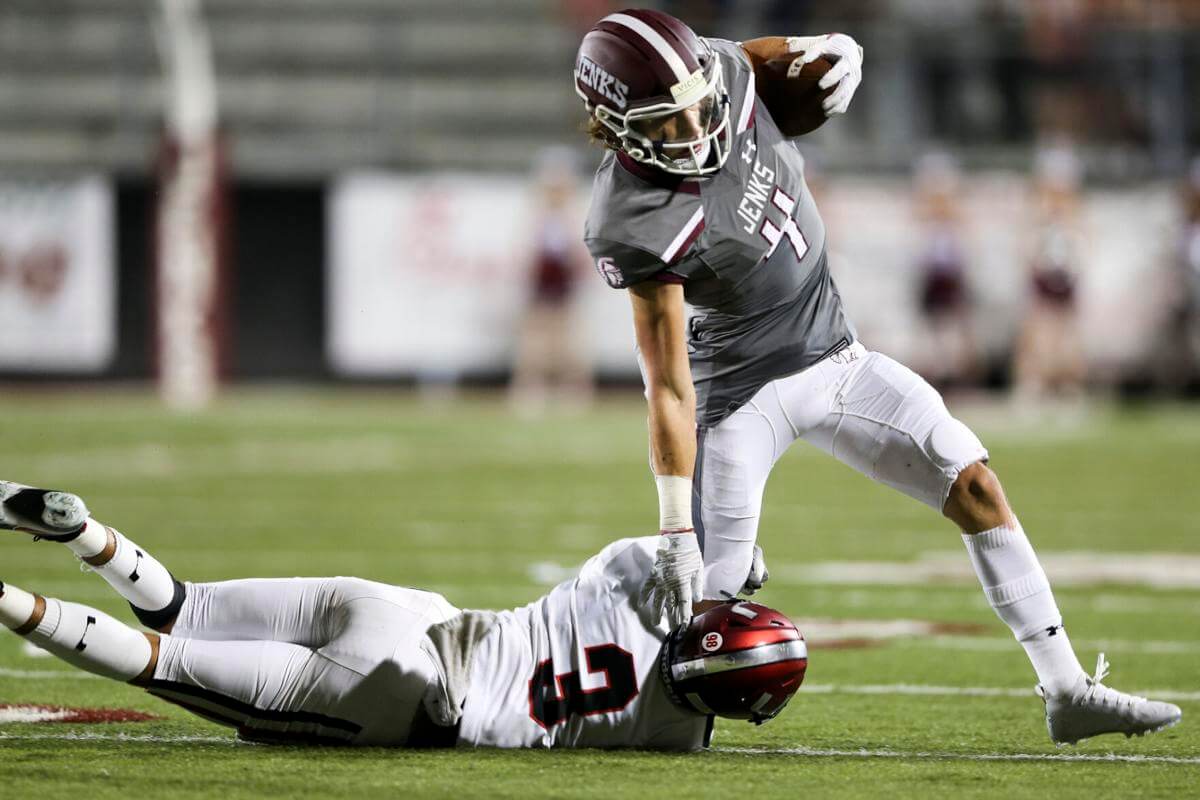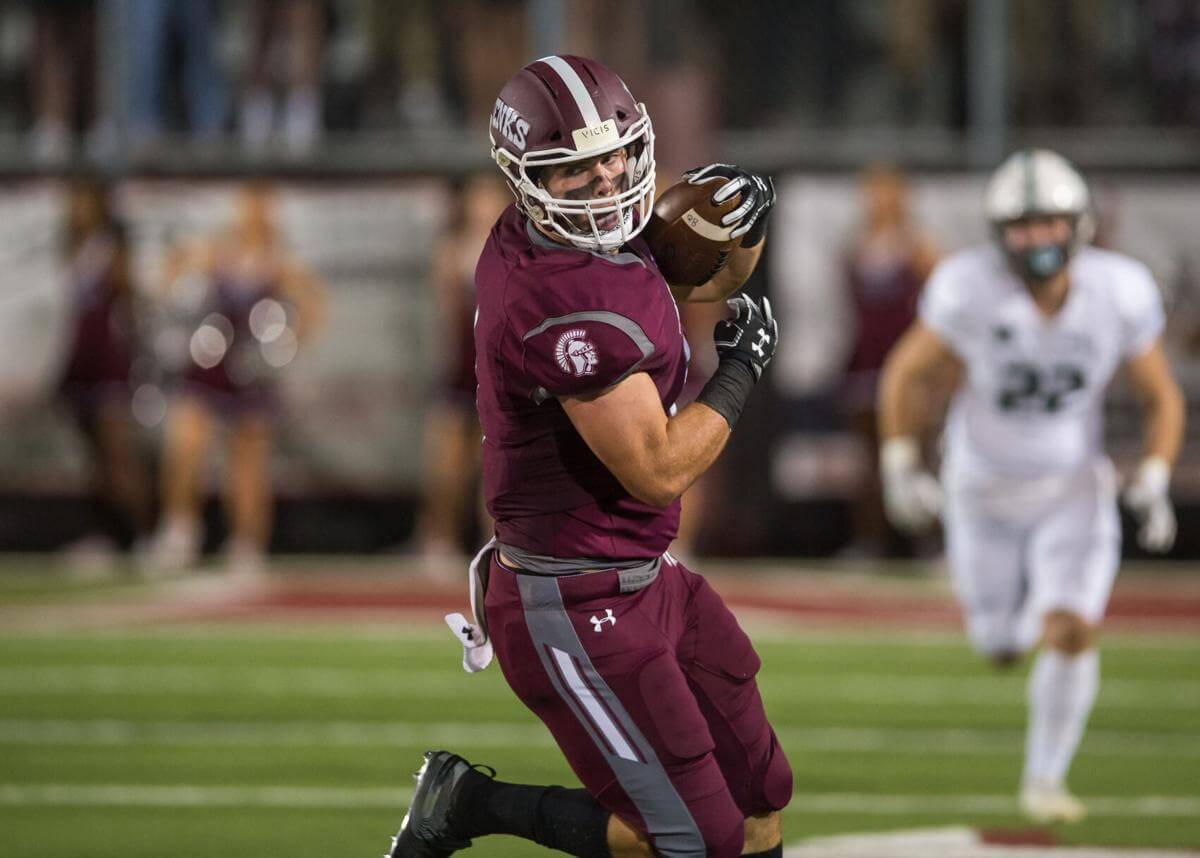Jenks High School Football
More and more high school football teams, coaches, and athletes are turning to technology to better understand the demands of the sport. This is because high school football continues to become more and more competitive and technology increasingly affordable.
Strength and Conditioning Coordinator at Jenks High School, Nick Whitmer, tells us more about how and why he uses wearable technology, what benefits it provides his football team and athletes, and offers recommendations for other high school coaches.
In this football user story, Whitmer makes specific reference to:
-
Helping athletes perform at their best
-
Mitigating the risk of injury
-
Improving return-to-play and supporting athlete safety

How and Why High School Football Teams use Wearable Technology
Whitmer started using Catapult wearable technology to help him understand the demands placed on his athletes, how he could use that information to mitigate against the risk of injury, and achieve a competitive advantage relating to athlete return to play.
“My goal and vision, at the time, was to see what kind of yards those athletes were doing in practices and games.
“With Catapult, we can design the strength and conditioning program to best fit the football coaches’ practice schedule and to help athletes best prepare for the demands of their sport.”
Now, with this understanding of the demands of football, Whitmer is able to improve his collaboration with the Jenks High School’s athletic training staff.
“Catapult allows for a more high-performance approach with collaboration with the athletic training staff,” says Whitmer. ”This approach improves the return to play processes for injured athletes.
“We specifically use the live tracking feature to know exactly at what percentage of the athlete’s workload they should be at as they go through the rehabilitation process.”
See how a similar team, St. Xavier HS Football, reduced injuries by 87% with Catapult →

What Catapult metrics improve your understanding of the demands of football?
Whitmer explains that, “for skill position athletes, we focus on total distance, sprint distance, top speed, and PlayerLoad”. Whereas, “for linemen, I also look at the sum of accelerations and decelerations”.
By collecting these key performance metrics, Whitmer can evaluate how and in what areas his athletes improve over time.
“I put these metrics against our rolling averages and look at changes over time. Whilst also using a simple formula to calculate the athletes volume and intensity for the session.
“Knowing which practice days have higher volume and intensity has helped me match the in-season strength and conditioning programming based on the practice schedule.“
Long-term planning with Catapult-derived data
Having used Catapult wearable solutions for many years now, the strength and conditioning coordinator is able to find patterns, trends, and build a better program for his athletes.
“Catapult has helped with long-term planning and performance monitoring. Looking at the changes over time and being able to find patterns across our practice session data, as well as, knowing the athlete’s volume and intensity allows me to build a better strength and conditioning program.
“The data helps me make decisions in the off-season by being able to pair the needs of what is being performed on the field with the weight room. This allows for more of an optimal off-season and summer plan, allowing our athlete to be primed for games.”
Day-to-day use of Catapult
The Catapult wearable solution sits centrally within the analysis of both practice sessions and game days.
“For practice days, I break down each practice period and monitor the athletes’ performance. On game days, I break down the data from the team warm up and each quarter to provide a complete sense of athlete performance on game day.
“Through using Catapult, we’ve been able to identify performance benchmarks the athletes need to hit in order to perform at their best. For example, when preparing for games, we know what they should be hitting to ensure they are pushing hard but not to the extent that would cause injury.”
Recommendations to other High School Football Coaches
If you’re a coach looking to understand the game in greater detail, learn how to mitigate injury risk and/or return your key athletes back from injury faster, Whitmer has the following recommendations:
-
Know what your athletes are doing on-field
“Adopt Catapult. If you want to maximize the performance of your team, then knowing what your athletes are doing on the field is a must. Knowing what your athletes are doing allows you to peak the performance of the team at the right time or back them off when you need in order to give them rest.”
-
Use the tech to support your decisions
“I do not let the technology dictate how I program the strength and conditioning plan for the athletes. Rather, I use it to match what I am aiming to accomplish for that given day and use it as a checks and balances system.
“Knowing the performance trends of your athletes and team helps with peaking your athletes and keeping them healthier over the course of the year.”
-
Question Catapult’s support team
“Catapult surprised me with how affordable it is. But the biggest thing has to be their customer service.
“The team has provided sports science help whenever I have questions or need clarification on a metric. The customer service is hands down some of the best that I have had the privilege working with. If there is a problem or issue, then our rep is on it that same day.”
“I feel like I am a valued customer of Catapult. They have helped me out every time I need something. They check in regularly to see how things are going and if I need anything. If I do, they are quick to get what I need if I do it in a timely manner.”
Get in touch to learn more about Catapult’s solutions for high school football, click here.
Vector Core: Simplified Load Management for Athlete Performance
With Vector Core, the future of load management is here, and it’s simplified. Catapult has narrowed down the essential metrics that leading professional teams use, presenting them in a streamlined, easy-to-understand format. This not only makes player performance and health decisions more accessible, but also more effective.
The new cloud-based interface allows work from anywhere, enabling seamless data management across different devices and locations. Plus, with instant upload and automatic data collection, your athlete data is always readily available. Discover more about how Vector Core is changing the game on this blog.
/// More football content for you
-
Blog: Six reasons coaches are using GPS athlete monitoring
-
Solution: Catapult’s affordable athlete monitoring solution
-
Case study: St Xavier High School Football reduces injuries by 87%
